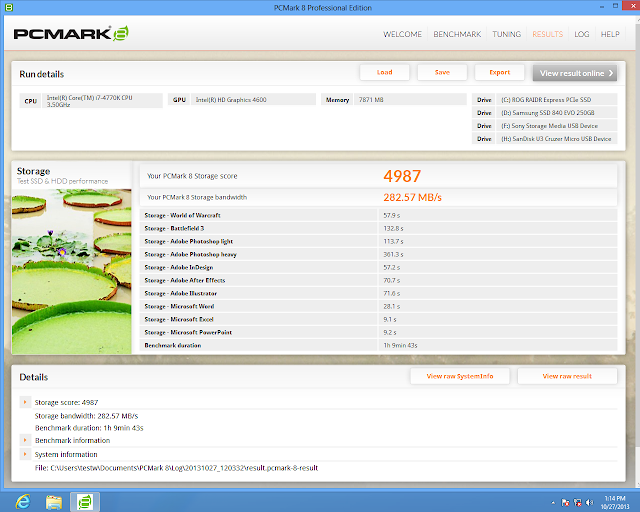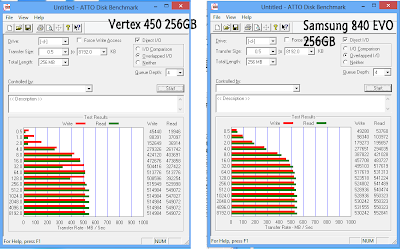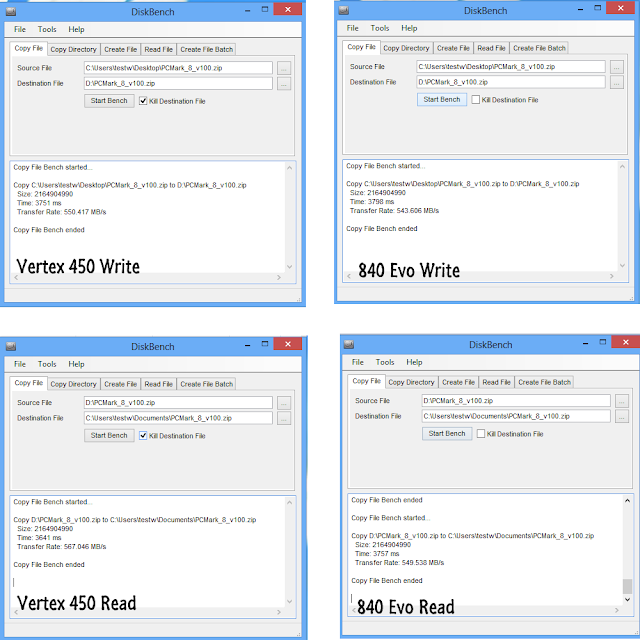Introduction
After releasing the flagship OCZ Vector SSD earlier this year, OCZ has met with strong competitions from other brands, challenging their product in terms of performance and price. Nonetheless, OCZ Vector remains strong as one of the best enthusiast class SSD in the market and the choice of many. In order to expand their product line to meet a wider audience, they just recently released the new OCZ Vertex 450 to update the 1.5 years old OCZ Vertex 4 series. OCZ Vertex series remains to be the top-mid tier SSD for the market, targeting those who wants a SSD which does not compromise performance at its price tag.
The Vertex 450 is totally different in terms of hardware components used as compared to the Vertex 4. OCZ has adopted a 20nm NAND flash with the latest Indilinx Barefoot 3 controller for the Vertex 450, changing from a previous 25nm NAND manufacturing process and an outdated Indilinx Everest 2 controller. This means that customers can expect performance increase in the Vertex 450 with the new technology installed that tackles problems faced in previous generation hardware.
We’ve got our hands on the 256GB version of the OCZ Vertex 450 SSD. We’ve also got a Samsung 840 Evo 256GB SSD to compare between these 2 SSDs and the technology from both companies.
| Inside the box : 3.5″ adapter, Installation Manual and Acronis Cloning Software CD Key |
| OCZ Vertex 450 only @ 7mm thim |
Specifications
|
Physical Specifications
|
|
|
Usable Capacities
|
128GB, 256GB, 512GB
|
|
NAND Components
|
20nm Multi-Level Cell (MLC) Flash
|
|
Interface
|
SATA 3.0 6Gb/s
|
|
Controller
|
Indilinx Barefoot 3 M10
|
|
Form Factor
|
2.5-inch; ultra-slim 7mm
|
|
Dimensions
|
99.7 (L) x 69.75 (W) x 7mm (H)
|
|
Drive Weight
|
115g
|
|
Environmental Specifications
|
|
|
|
Power Consumption
|
128GB
|
256 – 512GB
|
|
Idle
|
0.55W
|
0.60W
|
|
Active
|
2.15W
|
2.65W
|
|
Operating Temperature
|
0°C ~ 55°C
|
|
|
Storage Temperature
|
-45°C ~ 85°C
|
|
|
Shock Resistance
|
1500G/0.5m
|
|
|
Certifications
|
RoHS, CE, FCC, KCC,
C-Tick, BSMI, VCCI, UL |
|
|
Performance
|
|
||
|
|
128GB
|
256GB
|
512GB
|
|
Sequential Read Speed
|
525MB/s
|
540MB/s
|
540MB/s
|
|
Sequential Write Speed
|
290MB/s
|
525MB/s
|
530MB/s
|
|
Random Read Speed (4K,QD32)
|
75,000 IOPS
|
85,000 IOPS
|
85,000 IOPS
|
|
Random Write Speed (4K,QD32)
|
70,000 IOPS
|
90,000 IOPS
|
90,000IOPS
|
Test Setup
Benchmarks
DiskBench showed how the SSDs performed in a real world file transfer scenario. We wrote and read a the PC Mark 8 installation files to and fro both SSDs. As we are using a ASUS RAIDR PCI-E based SSD, were weren’t afraid that the OS drive will bottleneck the speeds. Apparently, OCZ Vertex 450 performed marginally better in terms of file transfers, and we were seeing transfer rates of 550MB/s write and 567MB/s read on it.
 |
| OCZ Vertex 450 256GB |
 |
| Samsung 840 EVO 256GB |
Conclusion
For the LATEST tech updates,
FOLLOW us on our Twitter
LIKE us on our FaceBook
SUBSCRIBE to us on our YouTube Channel!








